After a six-year hiatus and plenty of controversy, the Victoria’s Secret Fashion Show finally returned. The event was star-studded and boasted incredible musical performers, but the reboot of the once-iconic fashion show left many viewers wanting more.
From 1995 to 2018, the fashion show was one of the biggest pop culture events of the year. The shows created many viral moments, including Bella Hadid strutting by her fresh ex The Weeknd on the catwalk, and Rihanna delivering one of her most memorable performances. The outfits that were worn would set trends, and the limited-edition robes would sell out in stores each year. The shows also solidified the careers of countless supermodels, including Adriana Lima, Alessandra Ambrosio and Gisele Bündchen.
The reign of the Victoria’s Secret fashion show slowly began to unravel when viewers began expressing complaints, starting with a desire for more ethnic diversity amongst the models and size inclusion. This was snuffed by VS, who continued to employ mainly white models of the same ultra-petite size. In 2018, CMO Ed Razek was confronted with these requests where he publicly stated the fashion show was a “fantasy”, and thus should not include trans or plus-sized models. Furthermore, a team of journalists discovered that in the 1990s, Jeffrey Epstein served as an advisor to Les Wexner, Victoria’s Secret chief executive. These controversies coming to light around the time of the #MeToo movement was a devastating blow to the brand.
Victoria’s Secret’s resistance to inclusion and diversity allowed brands like Savage X Fenty by Rihanna to skyrocket in popularity. The Savage fashion shows were extremely high-production and featured models of all ages, ethnicities, sizes, and sexual identities. The difference in approach was nothing short of a 180 from Victoria’s Secret, and consumers took note. In March 2022, Bloomberg reported that Savage X Fenty was being valued at $3 billion, despite being less than five years old and only a few physical storefronts.
In the wake of the rampant controversy and subsequent emergence of more inclusive brands, Victoria’s Secret began closing many storefronts and shut down their swimwear and activewear lines. In an ardent effort to save face, the brand replaced the title “Angel” with a new concept called the “VS Collective” in 2021. The campaign starred figures such as American soccer player and LGBTQ2S+ icon Megan Rapinoe plus Paloma Elsesser, a biracial model and inclusivity advocate. Despite the shift toward a more diverse and inclusive image, many felt that that campaign was too little too late and inauthentic.
On a positive note, this year’s show had a much more inclusive range of models. Plus-size supermodel Ashley Graham starred in the show for the first time ever, and older supermodels including Carla Bruni and Kate Moss were other notable additions. The show welcomed back some of their previous angels like Bella Hadid, Gigi Hadid, Doutzen Kroes, Adriana Lima, Behati Prinsloo and Candace Swanepoel. In a history-making decision, Valentina Sampaio and Alex Consani were the first two transgender models to strut the catwalk in the show’s history.
From a beauty perspective, Victoria’s Secret models were always known for the iconic “Angel” glam look, but this was not the case this year. The signature VS Angel bouncy blowouts were replaced with simpler limp waves, and the ultra-feminine shimmery makeup waws swapped with more neutral, matte tones. The signature “bombshell” look was clearly not a priority for this show. Not very Victoria.
Many of the wardrobe choices seemed pedestrian or dated, looking like they were taken off the rack from a VS store or designed in the early 2010s. The innovative and current Victoria’s Secret of the future, the whole point in reinventing the fashion sow, was not reflected in the runway presentations. Simply put, the craftsmanship and high-fashion vision that previously went into the runway pieces was absent. There was a recurring theme of fishnet skirts with crystals, which were in style during festival season a few years ago and sold by inexpensive sites like Pretty Little Thing (I know this because I had one). There were even two models who wore the exact same looks. To further illustrate this, model Mika Schneider has been going viral due to her incredibly plain outfit and unimpressed demeanour on the catwalk.
The runway itself seemed almost dystopian. The ginormous, grey catwalk enveloped the models, and the sheer size of it was further accentuated due to the lack of embellishments and detail. Was this a lack of budget and vision, or done by design? The set was far cry from the sparkly, playful design of 2005 that had ginormous teddy bears on either side of the stage, wrapped gifts along the back, and ribbons falling from the ceilings.
The shoes that all the models wore were by René Caovilla, trademarked by the coil that goes up the ankle and leg. They were beautiful, but the seasoned models seemed to be struggling to walk in them. Additionally, veteran Doutzen Kroes got her heel stuck in a crevice on the runway. She struggled for quite a while to get it out and had to complete the runway with her shoe half-on. For a company whose reputation was once built around this fashion show, elementary errors like this shouldn’t have happened.
Viewers also waited patiently for the reveal of the Fantasy Bra, a multi-million-dollar bra made entirely of precious gemstones that is custom-made for the show. However, this beloved VS signature was not included. Furthermore, supermodel Tyra Banks closed the show, but her look was noticeably more conservative and basic compared to others. Black leggings to close the return of the world’s most iconic lingerie fashion show was a peculiar choice. To inject excitement back into the brand, should this show not have been triumphant and bold in every regard?
As much as Victoria’s Secret attempted to create a comeback with more inclusivity in their 2024 fashion show, the magic of its golden years seems to have faded. The X-factor, energy, excitement and production value that made the previous shows so memorable was not recreated. While this year’s show made strides in representation, it felt disconnected from the grandeur and visionary energy that once defined it. It seems that Victoria’s Secret never was able to successfully read the room and missed the mark on what made the previous shows special, despite a few long overdue improvements. Perhaps the show’s era of influence has passed, leaving room for even more brands to lead the way in creative captivating and inclusive fashion spectacles. —Maddie Clerides
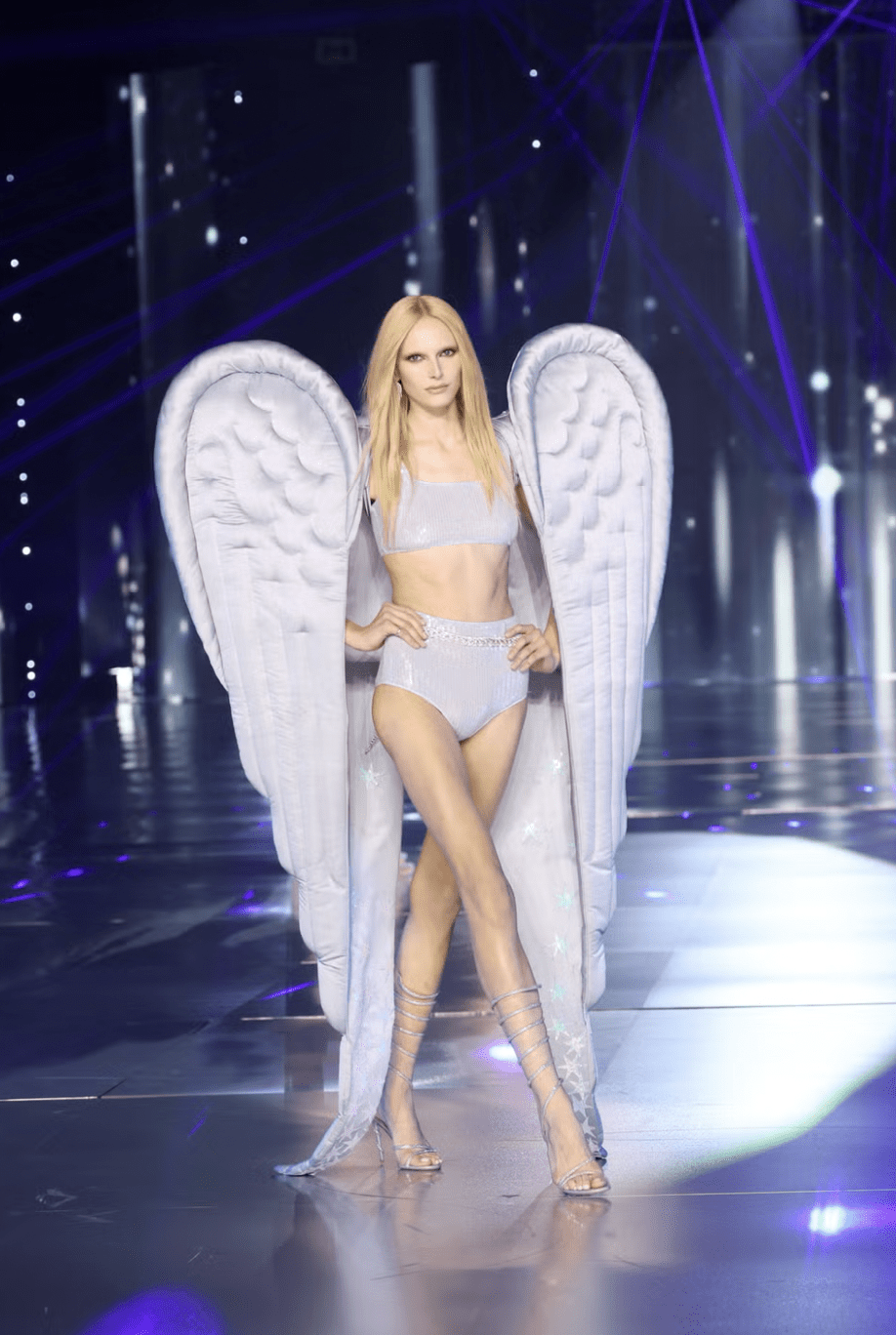
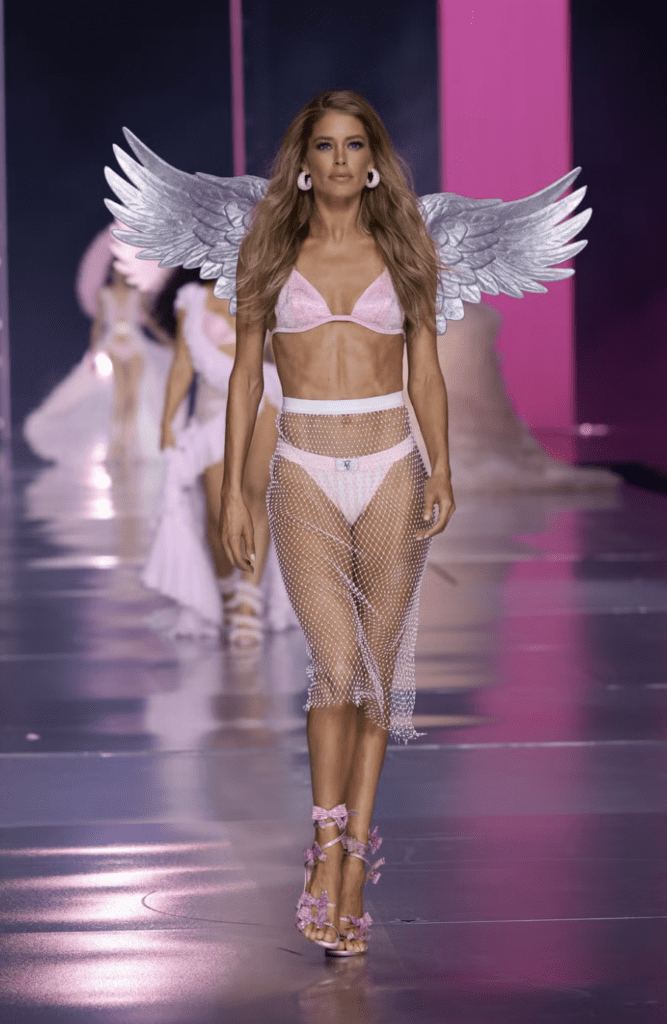
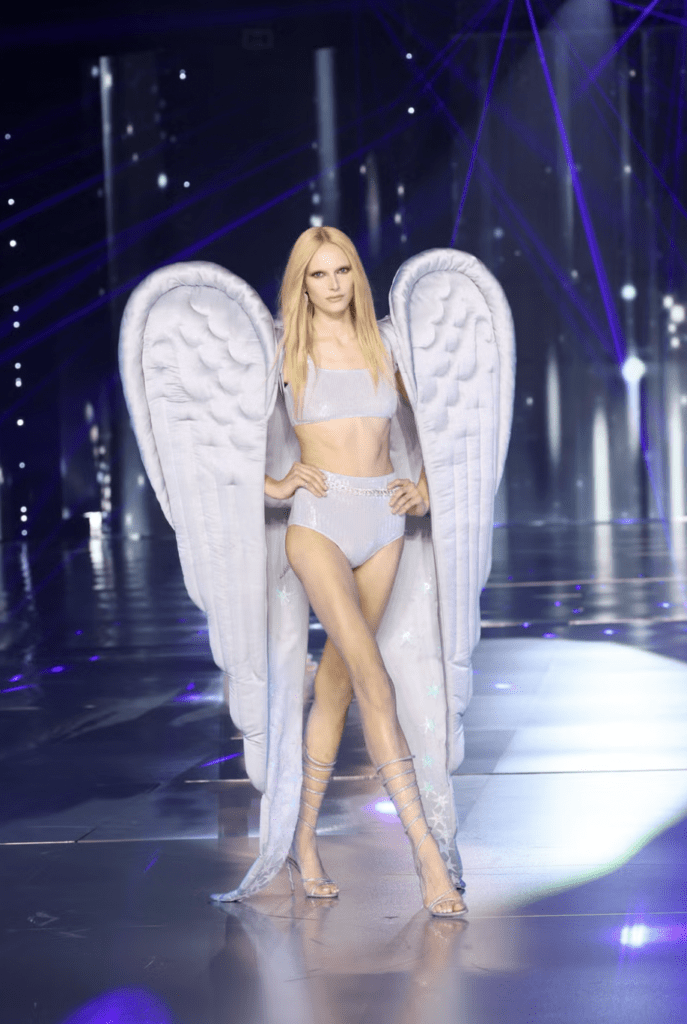
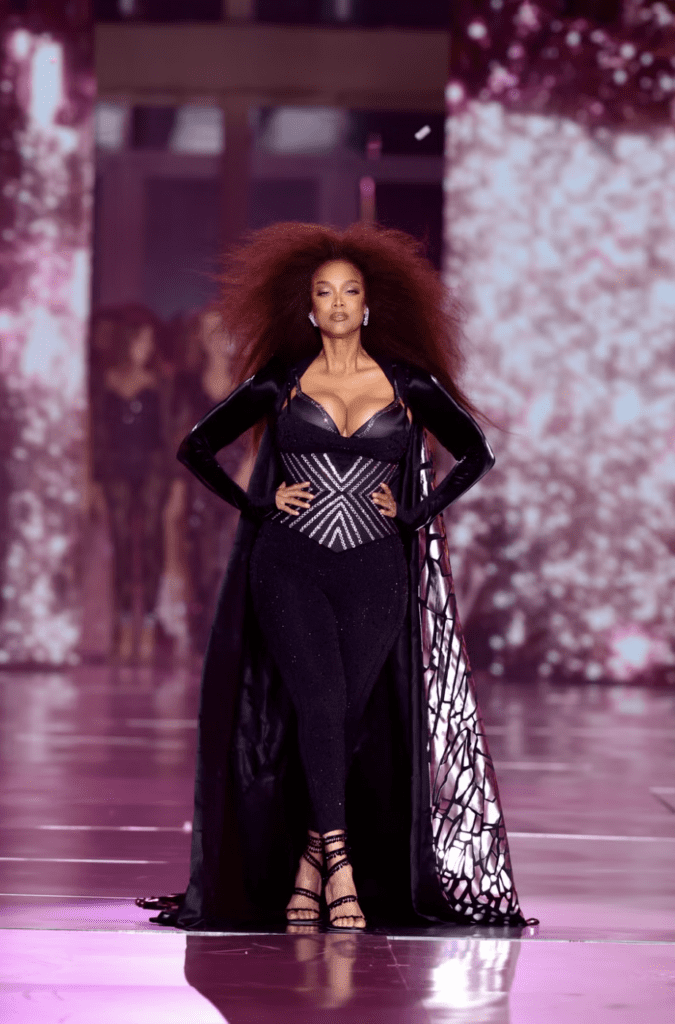
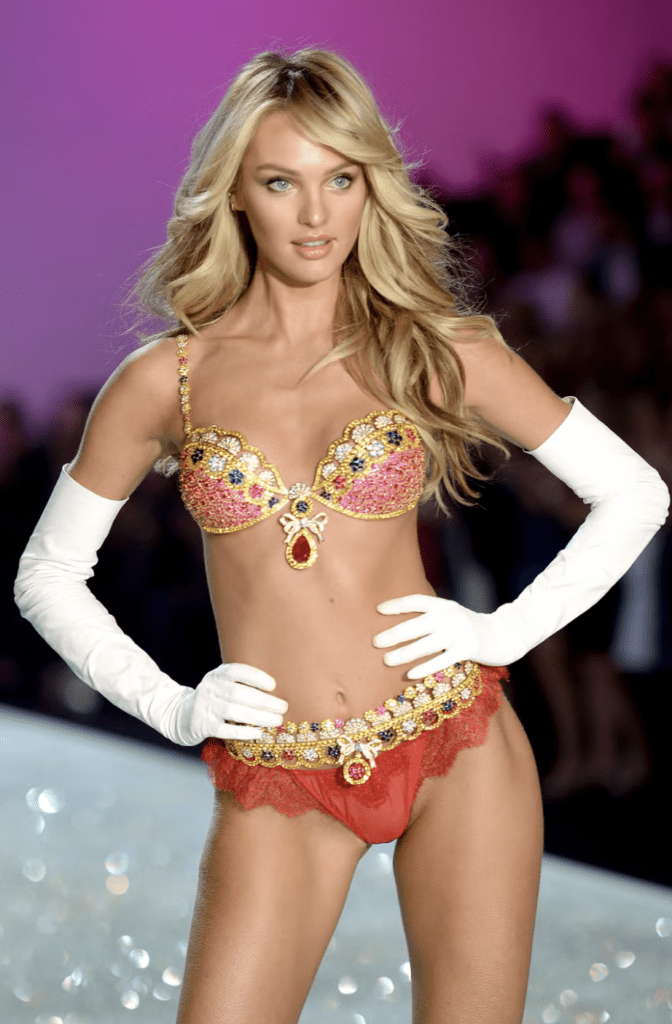
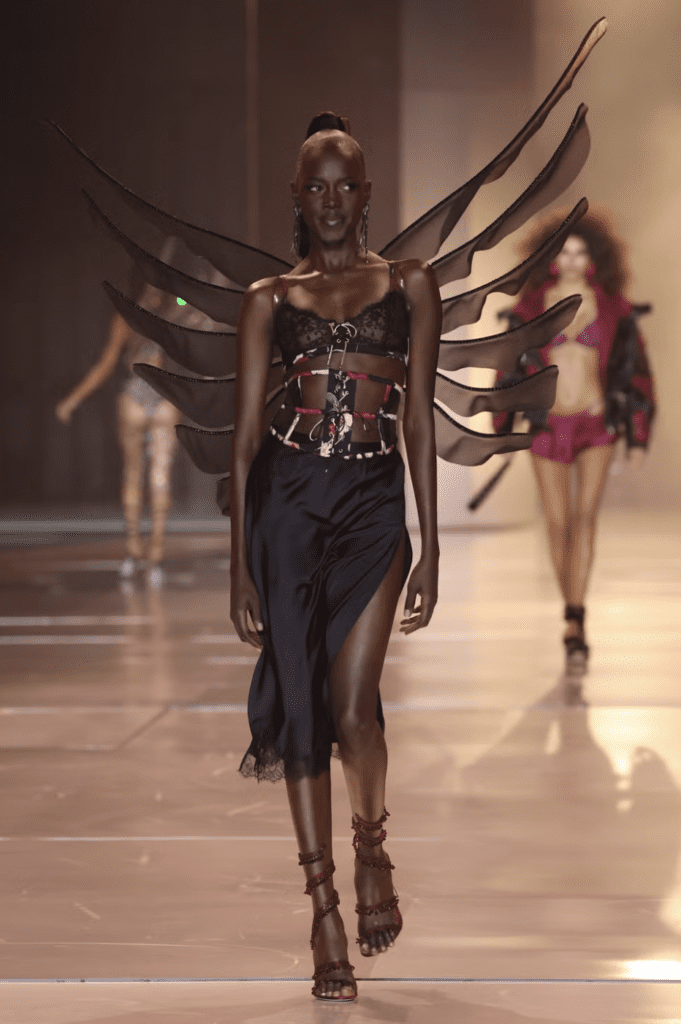
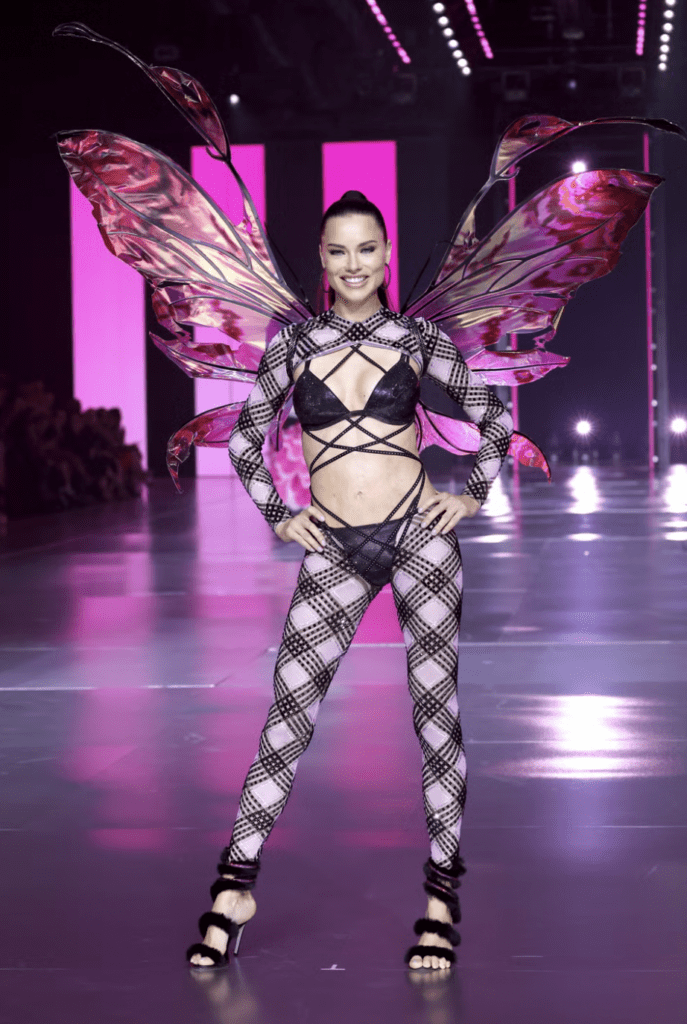
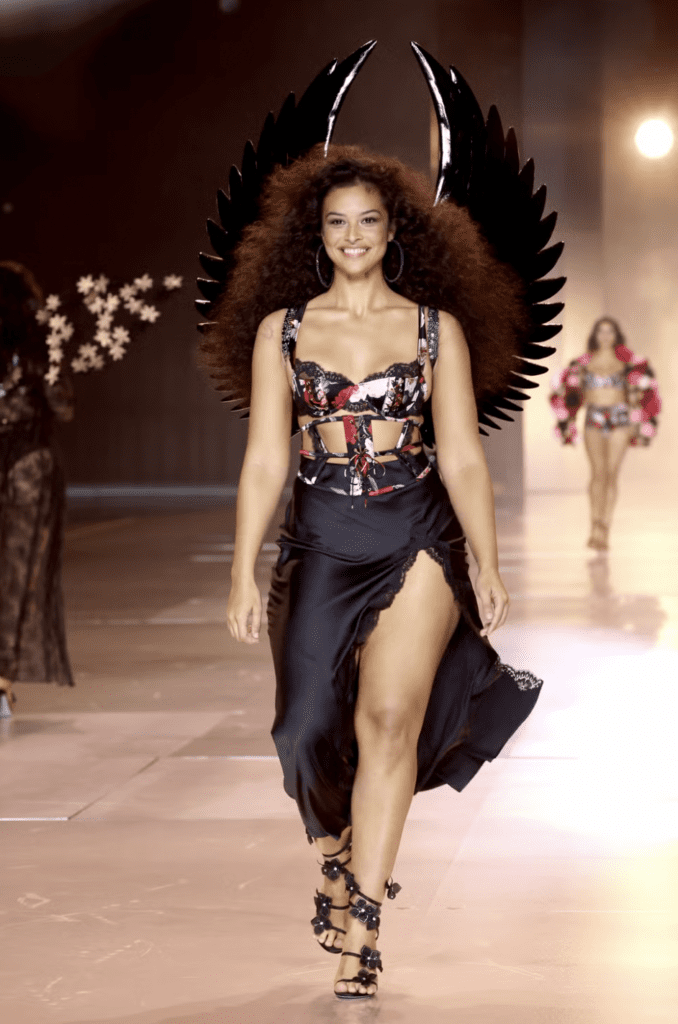
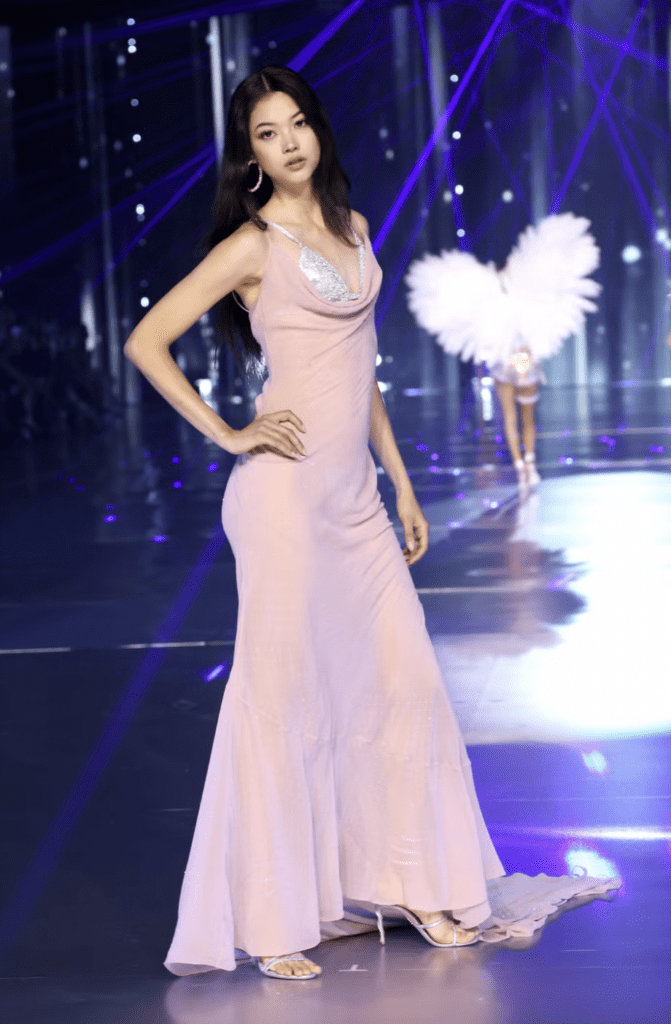
January 22nd, 2025 at 12:20 am
pharmacies in mexico that ship to usa: Mexican Easy Pharm – Mexican Easy Pharm
January 25th, 2025 at 4:37 am
https://dappharm.com/# priligy
prednisone 12 mg
January 30th, 2025 at 6:42 pm
Farmacie on line spedizione gratuita https://farmaprodotti.shop/# Farmacia online miglior prezzo
farmacia online piГ№ conveniente
January 30th, 2025 at 8:35 pm
alternativa al viagra senza ricetta in farmacia: FarmaSildItaly – pillole per erezioni fortissime
Farmacia online piГ№ conveniente
January 30th, 2025 at 10:21 pm
Manila is home to many large casinos.: phmacao casino – phmacao com login
January 30th, 2025 at 11:41 pm
Most casinos offer convenient transportation options.: taya777 login – taya777 register login
January 31st, 2025 at 12:00 am
phmacao casino phmacao com login Many casinos offer luxurious amenities and services.
January 31st, 2025 at 12:58 am
Online gaming is also growing in popularity. https://phtaya.tech/# Many casinos provide shuttle services for guests.
January 31st, 2025 at 3:11 am
Resorts provide both gaming and relaxation options.: taya777 login – taya777
January 31st, 2025 at 4:35 am
Some casinos have luxurious spa facilities.: taya365.art – taya365.art
January 31st, 2025 at 6:00 am
Slot machines feature various exciting themes. http://winchile.pro/# Las tragamonedas ofrecen grandes premios.
January 31st, 2025 at 6:12 am
http://phtaya.tech/# Poker rooms host exciting tournaments regularly.
Visitors come from around the world to play.
January 31st, 2025 at 8:08 am
Players enjoy a variety of table games.: taya777 – taya777 login
January 31st, 2025 at 8:33 am
taya777 app taya777 Manila is home to many large casinos.
January 31st, 2025 at 9:25 am
Cashless gaming options are becoming popular.: taya365 com login – taya365 login
January 31st, 2025 at 10:55 am
Some casinos feature themed gaming areas. http://taya777.icu/# Visitors come from around the world to play.
January 31st, 2025 at 1:02 pm
Live music events often accompany gaming nights.: taya365.art – taya365 com login
January 31st, 2025 at 2:12 pm
Los casinos organizan eventos especiales regularmente.: win chile – winchile casino
January 31st, 2025 at 3:37 pm
Many casinos offer luxurious amenities and services. http://taya777.icu/# Cashless gaming options are becoming popular.
January 31st, 2025 at 4:48 pm
phtaya casino phtaya Many casinos provide shuttle services for guests.
January 31st, 2025 at 5:24 pm
http://winchile.pro/# Los jugadores deben jugar con responsabilidad.
Poker rooms host exciting tournaments regularly.
January 31st, 2025 at 5:38 pm
Many casinos offer luxurious amenities and services.: phmacao – phmacao casino
January 31st, 2025 at 6:44 pm
Players can enjoy high-stakes betting options.: phmacao.life – phmacao com login
January 31st, 2025 at 8:18 pm
Slot machines attract players with big jackpots. http://taya777.icu/# Many casinos provide shuttle services for guests.
January 31st, 2025 at 10:20 pm
Los torneos de poker generan gran interГ©s.: jugabet.xyz – jugabet
January 31st, 2025 at 11:23 pm
Casino visits are a popular tourist attraction.: phmacao com login – phmacao
February 1st, 2025 at 12:52 am
phtaya login phtaya Many casinos host charity events and fundraisers.
February 1st, 2025 at 1:00 am
Poker rooms host exciting tournaments regularly. http://phmacao.life/# High rollers receive exclusive treatment and bonuses.
February 1st, 2025 at 3:04 am
Casinos often host special holiday promotions.: taya365.art – taya365.art
February 1st, 2025 at 4:05 am
Los casinos celebran festivales de juego anualmente.: winchile – win chile
February 1st, 2025 at 5:47 am
Responsible gaming initiatives are promoted actively. https://jugabet.xyz/# Las apuestas mГnimas son accesibles para todos.
February 1st, 2025 at 7:48 am
Las mГЎquinas tienen diferentes niveles de apuesta.: jugabet.xyz – jugabet
February 1st, 2025 at 8:46 am
La variedad de juegos es impresionante.: jugabet chile – jugabet casino
February 1st, 2025 at 8:56 am
taya365 taya365 com login Responsible gaming initiatives are promoted actively.
February 1st, 2025 at 10:35 am
Some casinos feature themed gaming areas. http://winchile.pro/# Las aplicaciones mГіviles permiten jugar en cualquier lugar.
February 1st, 2025 at 12:37 pm
Los jugadores deben jugar con responsabilidad.: win chile – winchile casino
February 1st, 2025 at 1:34 pm
Los jugadores deben conocer las reglas.: winchile – win chile
February 1st, 2025 at 3:25 pm
Many casinos offer luxurious amenities and services. https://taya777.icu/# Live music events often accompany gaming nights.
February 1st, 2025 at 5:07 pm
winchile win chile La competencia entre casinos beneficia a los jugadores.
February 1st, 2025 at 5:32 pm
п»їCasinos in the Philippines are highly popular.: phtaya casino – phtaya casino
February 1st, 2025 at 6:24 pm
La competencia entre casinos beneficia a los jugadores.: winchile casino – winchile casino
February 1st, 2025 at 8:33 pm
Gambling regulations are strictly enforced in casinos. http://winchile.pro/# Las promociones atraen nuevos jugadores diariamente.
February 1st, 2025 at 11:04 pm
The casino industry supports local economies significantly.: taya365 com login – taya365
February 1st, 2025 at 11:38 pm
Live dealer games enhance the casino experience.: taya777 register login – taya777
February 2nd, 2025 at 3:14 am
jugabet casino jugabet Las experiencias son Гєnicas en cada visita.
February 2nd, 2025 at 3:46 am
http://phtaya.tech/# Online gaming is also growing in popularity.
Many casinos host charity events and fundraisers.
February 2nd, 2025 at 4:23 am
Casino promotions draw in new players frequently.: phmacao – phmacao casino
February 2nd, 2025 at 4:40 am
Responsible gaming initiatives are promoted actively.: taya365 – taya365
February 2nd, 2025 at 8:02 am
https://taya365.art/# Many casinos have beautiful ocean views.
Security measures ensure a safe environment.
February 2nd, 2025 at 9:28 am
Live dealer games enhance the casino experience.: taya777 register login – taya777 app
February 2nd, 2025 at 9:38 am
Many casinos host charity events and fundraisers.: taya777 app – taya777 register login
February 2nd, 2025 at 1:16 pm
phtaya casino phtaya.tech Many casinos offer luxurious amenities and services.
February 2nd, 2025 at 3:06 pm
Players must be at least 21 years old.: phtaya.tech – phtaya login
February 2nd, 2025 at 7:33 pm
Many casinos have beautiful ocean views.: phtaya login – phtaya.tech
February 2nd, 2025 at 8:33 pm
Responsible gaming initiatives are promoted actively.: taya365 com login – taya365 com login
February 2nd, 2025 at 11:07 pm
jugabet casino jugabet.xyz Las experiencias son Гєnicas en cada visita.
February 3rd, 2025 at 12:53 am
Los pagos son rГЎpidos y seguros.: jugabet – jugabet chile
February 3rd, 2025 at 2:06 am
Security measures ensure a safe environment.: phtaya login – phtaya.tech
February 3rd, 2025 at 5:59 am
Many casinos have beautiful ocean views.: phmacao.life – phmacao com login
February 3rd, 2025 at 7:37 am
Entertainment shows are common in casinos.: taya777 – taya777
February 3rd, 2025 at 8:52 am
taya365 taya365 login The thrill of winning keeps players engaged.
February 3rd, 2025 at 1:00 pm
Las ganancias son una gran motivaciГіn.: jugabet – jugabet casino
February 3rd, 2025 at 4:06 pm
Security measures ensure a safe environment.: phtaya – phtaya
February 3rd, 2025 at 6:20 pm
Los juegos en vivo ofrecen emociГіn adicional.: winchile casino – winchile.pro
February 3rd, 2025 at 6:42 pm
phtaya phtaya casino Security measures ensure a safe environment.
February 3rd, 2025 at 8:59 pm
Security measures ensure a safe environment.: taya777 app – taya777
February 3rd, 2025 at 11:15 pm
Slot tournaments create friendly competitions among players.: taya777 register login – taya777
February 4th, 2025 at 2:05 am
Players often share tips and strategies.: phtaya.tech – phtaya casino
February 4th, 2025 at 4:35 am
mexico drug stores pharmacies: mexican online pharmacies prescription drugs – xxl mexican pharm
February 4th, 2025 at 6:03 am
prescription drugs online: prescription drugs from canada – discount drug mart
February 4th, 2025 at 6:19 am
discount drug pharmacy discount drug pharmacy drug mart
February 4th, 2025 at 8:38 am
online pharmacy no prescription https://discountdrugmart.pro/# drugmart
February 4th, 2025 at 9:41 am
promo code for canadian pharmacy meds: drug mart – international pharmacy no prescription
February 4th, 2025 at 11:00 am
xxl mexican pharm: reputable mexican pharmacies online – buying prescription drugs in mexico online
February 4th, 2025 at 1:34 pm
offshore pharmacy no prescription http://familypharmacy.company/# Cheapest online pharmacy
February 4th, 2025 at 2:32 pm
reputable mexican pharmacies online: xxl mexican pharm – xxl mexican pharm
February 4th, 2025 at 2:55 pm
Cheapest online pharmacy online pharmacy delivery usa online pharmacy delivery usa
February 4th, 2025 at 3:48 pm
mexican online pharmacies prescription drugs: medication from mexico pharmacy – xxl mexican pharm
February 4th, 2025 at 7:55 pm
family pharmacy: online pharmacy delivery usa – online pharmacy delivery usa
February 4th, 2025 at 8:04 pm
canadian pharmacies not requiring prescription https://xxlmexicanpharm.shop/# xxl mexican pharm
February 5th, 2025 at 12:57 am
best canadian pharmacy to order from easy canadian pharm easy canadian pharm
February 5th, 2025 at 2:07 am
buying prescription drugs in mexico online: buying prescription drugs in mexico online – xxl mexican pharm
February 5th, 2025 at 2:58 am
MegaIndiaPharm: MegaIndiaPharm – mail order pharmacy india
February 5th, 2025 at 8:25 am
Online medicine home delivery: Mega India Pharm – Mega India Pharm
February 5th, 2025 at 9:10 am
I want to use this opportunity to testify of the marvelous work of Dr. Odunga and how he has helped me in curing my sickness and bringing happiness into my life. I can really vouch for Dr. Odunga in herbal treatment. I was suffering from Cervical Cancer and infected with HPV 16. I used to have incessant bleeding and there was nothing I could do until a childhood friend introduced me to Dr. Odunga Remedies. I spoke with him and ordered his recommended medication which was delivered to me through DHL. Immediately I began using the herbal medicine, within a week I couldn’t feel any pain. It took me 2 weeks to finish the medicine and afterwards I was completely cured. I highly recommend that you contact him to help you at his email odungaspelltemple@gmail.com OR What’sApp/Call him at +2348167159012
He is 100% reliable to help you too.
February 5th, 2025 at 11:50 am
xxl mexican pharm xxl mexican pharm xxl mexican pharm
February 5th, 2025 at 2:39 pm
discount drug mart pharmacy: discount drug mart – discount drug mart
February 5th, 2025 at 2:43 pm
drug mart: discount drug mart – discount drug mart pharmacy
February 5th, 2025 at 6:23 pm
online pharmacy without prescription https://familypharmacy.company/# Best online pharmacy
February 5th, 2025 at 8:32 pm
canadianpharmacyworld com: canada cloud pharmacy – easy canadian pharm
February 5th, 2025 at 8:53 pm
easy canadian pharm: canada drugs online – canadian neighbor pharmacy
February 5th, 2025 at 10:38 pm
family pharmacy online pharmacy delivery usa family pharmacy
February 6th, 2025 at 3:13 am
xxl mexican pharm: medication from mexico pharmacy – xxl mexican pharm
February 6th, 2025 at 8:33 am
Cheapest online pharmacy: Cheapest online pharmacy – family pharmacy
February 6th, 2025 at 9:46 am
medication canadian pharmacy: easy canadian pharm – northwest pharmacy canada
February 6th, 2025 at 4:04 pm
buy prescription drugs from india: Mega India Pharm – Mega India Pharm
February 6th, 2025 at 8:06 pm
pharmacies in mexico that ship to usa pharmacies in mexico that ship to usa xxl mexican pharm
February 6th, 2025 at 9:55 pm
promo code for canadian pharmacy meds: drugmart – drug mart
February 6th, 2025 at 11:55 pm
cheapest pharmacy to fill prescriptions with insurance https://easycanadianpharm.com/# reliable canadian pharmacy
February 7th, 2025 at 1:37 am
cheapest pharmacy for prescription drugs: drug mart – drug mart
February 7th, 2025 at 3:57 am
MegaIndiaPharm: Mega India Pharm – MegaIndiaPharm
February 7th, 2025 at 6:11 am
rx pharmacy coupons https://xxlmexicanpharm.shop/# mexican online pharmacies prescription drugs
February 7th, 2025 at 6:47 am
canadian pharmacy online easy canadian pharm canadian pharmacy world
February 7th, 2025 at 7:11 am
reputable mexican pharmacies online: pharmacies in mexico that ship to usa – xxl mexican pharm
February 7th, 2025 at 10:06 am
online pharmacy non prescription drugs: Online pharmacy USA – Cheapest online pharmacy
February 7th, 2025 at 10:33 am
canadian pharmacy discount code http://easycanadianpharm.com/# easy canadian pharm
February 7th, 2025 at 1:00 pm
Mega India Pharm: india online pharmacy – MegaIndiaPharm
February 7th, 2025 at 3:00 pm
mail order pharmacy no prescription https://discountdrugmart.pro/# drug mart
February 7th, 2025 at 4:15 pm
Online pharmacy USA: Best online pharmacy – online pharmacy delivery usa
February 7th, 2025 at 5:19 pm
online pharmacy without prescription http://megaindiapharm.com/# Mega India Pharm
February 7th, 2025 at 5:39 pm
family pharmacy Online pharmacy USA online pharmacy delivery usa
February 7th, 2025 at 6:41 pm
xxl mexican pharm: mexican border pharmacies shipping to usa – pharmacies in mexico that ship to usa
February 7th, 2025 at 10:20 pm
online pharmacy delivery usa: Online pharmacy USA – Cheapest online pharmacy
February 7th, 2025 at 11:07 pm
pharmacy no prescription required https://megaindiapharm.com/# Mega India Pharm
February 8th, 2025 at 4:15 am
best no prescription pharmacy https://megaindiapharm.com/# MegaIndiaPharm
February 8th, 2025 at 4:23 am
mail order pharmacy no prescription: discount drug mart pharmacy – drug mart
February 8th, 2025 at 4:52 am
promo code for canadian pharmacy meds http://megaindiapharm.com/# MegaIndiaPharm
February 8th, 2025 at 9:33 am
xxl mexican pharm: buying from online mexican pharmacy – xxl mexican pharm
February 8th, 2025 at 2:24 pm
canada drugs online: easy canadian pharm – easy canadian pharm
February 8th, 2025 at 2:50 pm
drugmart discount drugs discount drug mart pharmacy
February 8th, 2025 at 6:40 pm
pharmacy coupons http://megaindiapharm.com/# Mega India Pharm
February 8th, 2025 at 7:07 pm
medicine in mexico pharmacies: xxl mexican pharm – buying prescription drugs in mexico online
February 8th, 2025 at 11:18 pm
rx pharmacy coupons https://easycanadianpharm.shop/# pharmacy com canada
February 9th, 2025 at 12:06 am
Mega India Pharm: indian pharmacies safe – indianpharmacy com
February 9th, 2025 at 1:37 am
http://slotdemo.auction/# Slot dengan tema budaya lokal menarik perhatian
February 9th, 2025 at 1:41 am
preman69 slot preman69 Mesin slot menawarkan pengalaman bermain yang cepat
February 9th, 2025 at 4:58 am
Banyak kasino memiliki program loyalitas untuk pemain https://garuda888.top/# Pemain sering berbagi tips untuk menang
February 9th, 2025 at 5:37 am
Slot modern memiliki grafik yang mengesankan http://slot88.company/# Permainan slot bisa dimainkan dengan berbagai taruhan
February 9th, 2025 at 5:44 am
Pemain bisa menikmati slot dari kenyamanan rumah: preman69.tech – preman69.tech
February 9th, 2025 at 6:26 am
http://garuda888.top/# Kasino di Indonesia menyediakan hiburan yang beragam
February 9th, 2025 at 9:55 am
Jackpot besar bisa mengubah hidup seseorang https://slot88.company/# Pemain sering berbagi tips untuk menang
February 9th, 2025 at 10:06 am
slot 88 slot 88 Slot dengan tema budaya lokal menarik perhatian
February 9th, 2025 at 10:30 am
Pemain bisa menikmati slot dari kenyamanan rumah: bonaslot.site – bonaslot.site
February 9th, 2025 at 11:02 am
https://garuda888.top/# Slot klasik tetap menjadi favorit banyak orang
February 9th, 2025 at 2:45 pm
Banyak pemain berusaha untuk mendapatkan jackpot: slot demo – slot demo
February 9th, 2025 at 3:09 pm
http://bonaslot.site/# Mesin slot sering diperbarui dengan game baru
February 9th, 2025 at 5:37 pm
garuda888 slot garuda888 Slot dengan tema film terkenal menarik banyak perhatian
February 9th, 2025 at 7:05 pm
Jackpot besar bisa mengubah hidup seseorang: akun demo slot – slot demo
February 9th, 2025 at 7:25 pm
https://slot88.company/# Pemain harus menetapkan batas saat bermain
February 9th, 2025 at 11:55 pm
Banyak pemain mencari mesin dengan RTP tinggi: garuda888 slot – garuda888.top
February 10th, 2025 at 12:04 am
https://slotdemo.auction/# Pemain bisa menikmati slot dari kenyamanan rumah
February 10th, 2025 at 2:52 am
bonaslot.site BonaSlot Slot dengan tema budaya lokal menarik perhatian
February 10th, 2025 at 5:34 am
https://slotdemo.auction/# Slot menawarkan kesenangan yang mudah diakses
February 10th, 2025 at 5:48 am
Kasino memiliki suasana yang energik dan menyenangkan: slotdemo – slot demo
February 10th, 2025 at 10:54 am
https://slotdemo.auction/# Slot klasik tetap menjadi favorit banyak orang
February 10th, 2025 at 11:29 am
Permainan slot mudah dipahami dan menyenangkan: garuda888 slot – garuda888 slot
February 10th, 2025 at 3:37 pm
https://slotdemo.auction/# Pemain harus memahami aturan masing-masing mesin
February 10th, 2025 at 4:16 pm
Pemain harus memahami aturan masing-masing mesin: preman69 slot – preman69.tech
February 10th, 2025 at 7:40 pm
Kasino di Bali menarik banyak pengunjung https://slot88.company/# Beberapa kasino memiliki area khusus untuk slot
February 10th, 2025 at 9:02 pm
Keseruan bermain slot selalu menggoda para pemain: slot demo – slot demo
February 11th, 2025 at 1:49 am
Slot dengan bonus putaran gratis sangat populer: bonaslot – BonaSlot
February 11th, 2025 at 5:24 am
http://slotdemo.auction/# Slot menjadi daya tarik utama di kasino
February 11th, 2025 at 6:43 am
Banyak kasino memiliki program loyalitas untuk pemain: slot 88 – slot88
February 11th, 2025 at 10:03 am
https://slotdemo.auction/# Banyak pemain berusaha untuk mendapatkan jackpot
February 11th, 2025 at 11:35 am
Banyak pemain menikmati jackpot harian di slot: slot88.company – slot88
February 11th, 2025 at 2:43 pm
https://bonaslot.site/# Pemain sering berbagi tips untuk menang
February 11th, 2025 at 4:21 pm
Kasino menyediakan layanan pelanggan yang baik: garuda888.top – garuda888
February 11th, 2025 at 7:18 pm
https://slotdemo.auction/# Mesin slot menawarkan pengalaman bermain yang cepat
February 11th, 2025 at 9:02 pm
Banyak kasino menawarkan permainan langsung yang seru: demo slot pg – slot demo
February 11th, 2025 at 11:53 pm
http://preman69.tech/# Slot klasik tetap menjadi favorit banyak orang
February 12th, 2025 at 1:54 am
Kasino di Jakarta memiliki berbagai pilihan permainan: slot88 – slot 88
February 12th, 2025 at 4:33 am
http://slotdemo.auction/# Banyak pemain menikmati jackpot harian di slot
February 12th, 2025 at 6:54 am
Mesin slot dapat dimainkan dalam berbagai bahasa: preman69 – preman69.tech
February 12th, 2025 at 9:13 am
https://garuda888.top/# Kasino di Jakarta memiliki berbagai pilihan permainan
February 12th, 2025 at 11:38 am
Pemain sering mencoba berbagai jenis slot: preman69 slot – preman69
February 12th, 2025 at 12:57 pm
Pemain bisa menikmati slot dari kenyamanan rumah http://slotdemo.auction/# Mesin slot menawarkan berbagai tema menarik
February 12th, 2025 at 1:52 pm
https://slotdemo.auction/# Mesin slot baru selalu menarik minat
February 12th, 2025 at 4:21 pm
Slot menawarkan berbagai jenis permainan bonus: slot88 – slot 88
February 12th, 2025 at 6:27 pm
https://garuda888.top/# Pemain sering berbagi tips untuk menang
February 12th, 2025 at 7:07 pm
garuda888 slot garuda888 Keseruan bermain slot selalu menggoda para pemain
February 12th, 2025 at 9:15 pm
Mesin slot menawarkan pengalaman bermain yang cepat: slot demo gratis – slot demo pg gratis
February 12th, 2025 at 11:40 pm
https://slotdemo.auction/# Kasino sering mengadakan turnamen slot menarik
February 12th, 2025 at 11:51 pm
Kasino di Bali menarik banyak pengunjung http://slot88.company/# Slot modern memiliki grafik yang mengesankan
February 13th, 2025 at 3:12 am
Kasino memastikan keamanan para pemain dengan baik: slot demo gratis – slot demo
February 13th, 2025 at 5:15 am
http://preman69.tech/# Mesin slot sering diperbarui dengan game baru
February 13th, 2025 at 5:20 am
slot88 slot88.company Mesin slot digital semakin banyak diminati
February 13th, 2025 at 5:33 am
Kasino di Bali menarik banyak pengunjung https://slotdemo.auction/# Slot modern memiliki grafik yang mengesankan
February 13th, 2025 at 8:52 am
clomid without insurance: ClmHealthPharm – where to get clomid without dr prescription
February 13th, 2025 at 11:30 am
https://doxhealthpharm.com/# doxycycline 200 mg
February 13th, 2025 at 2:04 pm
how to get amoxicillin: cost of amoxicillin 875 mg – where can i buy amoxicillin online
February 13th, 2025 at 3:30 pm
doxycycline buy canada DoxHealthPharm where can i buy doxycycline
February 13th, 2025 at 4:34 pm
https://zithropharm.shop/# zithromax over the counter
February 13th, 2025 at 5:12 pm
buy amoxil: buy amoxicillin from canada – amoxicillin 500 mg where to buy
February 13th, 2025 at 7:10 pm
where can i get doxycycline pills: Dox Health Pharm – doxycycline 100mg price australia
February 13th, 2025 at 10:44 pm
can you buy clomid without dr prescription: how can i get clomid no prescription – can you get generic clomid for sale
February 13th, 2025 at 10:50 pm
cost of generic zithromax: ZithroPharm – buy cheap generic zithromax
February 14th, 2025 at 1:06 am
zithromax online purchase zithromax z-pak buy zithromax without presc
February 14th, 2025 at 1:07 am
buying generic clomid without insurance: ClmHealthPharm – can i get clomid online
February 14th, 2025 at 3:35 am
https://clmhealthpharm.shop/# where can i buy generic clomid without insurance
February 14th, 2025 at 4:43 am
doxycycline 100 mg: DoxHealthPharm – doxycycline 500mg tablets
February 14th, 2025 at 7:34 am
where to get zithromax over the counter: ZithroPharm – zithromax cost
February 14th, 2025 at 7:38 am
can i buy 40mg doxycycline online: 40mg doxycycline prices – doxycycline 100mg tablet brand name
February 14th, 2025 at 9:42 am
http://zithropharm.com/# generic zithromax online paypal
February 14th, 2025 at 12:10 pm
doxycycline 20 mg tablets DoxHealthPharm can you buy doxycycline over the counter in nz
February 14th, 2025 at 12:10 pm
where to get generic clomid: ClmHealthPharm – how to buy generic clomid no prescription
February 14th, 2025 at 2:06 pm
buy doxycycline pills online: DoxHealthPharm – cheapest doxycycline without prescrtiption
February 14th, 2025 at 3:37 pm
https://clmhealthpharm.com/# can you buy generic clomid price
February 14th, 2025 at 4:39 pm
amoxicillin where to get: Amo Health Pharm – buy amoxicillin over the counter uk
February 14th, 2025 at 8:24 pm
order amoxicillin uk: AmoHealthPharm – generic amoxicillin 500mg
February 14th, 2025 at 9:10 pm
doxycycline online uk: DoxHealthPharm – doxycycline canada pharmacy
February 14th, 2025 at 9:28 pm
https://amohealthpharm.shop/# where can i get amoxicillin 500 mg
February 14th, 2025 at 10:51 pm
can i get generic clomid without dr prescription can i buy clomid online where can i buy generic clomid
February 14th, 2025 at 11:00 pm
can i order cheap clomid tablets: ClmHealthPharm – how can i get clomid tablets
February 15th, 2025 at 2:39 am
zithromax generic price: ZithroPharm – zithromax buy
February 15th, 2025 at 4:58 am
zithromax 500 mg for sale: ZithroPharm – where can i get zithromax
February 15th, 2025 at 9:02 am
generic zithromax 500mg: buy zithromax no prescription – zithromax 500 mg lowest price online
February 15th, 2025 at 9:12 am
https://amohealthpharm.shop/# buy amoxicillin 500mg capsules uk
February 15th, 2025 at 3:09 pm
https://amohealthpharm.com/# amoxicillin 1000 mg capsule
February 15th, 2025 at 3:26 pm
buy amoxicillin 250mg: Amo Health Pharm – amoxicillin 1000 mg capsule
February 15th, 2025 at 4:24 pm
doxycycline for sale uk: Dox Health Pharm – doxycycline price australia
February 15th, 2025 at 8:28 pm
amoxicillin 500 tablet AmoHealthPharm amoxicillin script
February 15th, 2025 at 9:11 pm
https://clmhealthpharm.com/# where buy generic clomid no prescription
February 15th, 2025 at 9:59 pm
can i purchase generic clomid online: ClmHealthPharm – get generic clomid without prescription
February 15th, 2025 at 10:46 pm
zithromax z-pak: ZithroPharm – zithromax 500 mg lowest price drugstore online
February 16th, 2025 at 4:19 am
doxycycline over the counter australia: doxycycline over the counter drug – doxycycline online purchase
February 16th, 2025 at 8:02 am
pharmacie en ligne livraison europe pharmacie en ligne sans ordonnance pharmacie en ligne france fiable
February 16th, 2025 at 8:13 am
https://tadalafilmeilleurprix.com/# trouver un mГ©dicament en pharmacie
pharmacie en ligne france pas cher
February 16th, 2025 at 9:17 am
Pharmacie en ligne livraison Europe https://pharmaciemeilleurprix.shop/# acheter mГ©dicament en ligne sans ordonnance
February 16th, 2025 at 12:56 pm
https://pharmaciemeilleurprix.com/# pharmacie en ligne france fiable
pharmacie en ligne france livraison internationale
February 16th, 2025 at 1:53 pm
pharmacie en ligne france livraison internationale https://kamagrameilleurprix.com/# acheter mГ©dicament en ligne sans ordonnance
February 16th, 2025 at 5:38 pm
https://pharmaciemeilleurprix.shop/# pharmacie en ligne france pas cher
vente de mГ©dicament en ligne
February 16th, 2025 at 6:29 pm
trouver un mГ©dicament en pharmacie https://kamagrameilleurprix.com/# pharmacie en ligne sans ordonnance
February 16th, 2025 at 11:07 pm
https://tadalafilmeilleurprix.shop/# pharmacie en ligne fiable
trouver un mГ©dicament en pharmacie
February 17th, 2025 at 1:23 am
trouver un mГ©dicament en pharmacie pharmacie en ligne pharmacie en ligne france livraison belgique
February 17th, 2025 at 5:11 am
https://kamagrameilleurprix.com/# trouver un mГ©dicament en pharmacie
Achat mГ©dicament en ligne fiable
February 17th, 2025 at 5:33 am
pharmacies en ligne certifiГ©es https://tadalafilmeilleurprix.shop/# pharmacie en ligne fiable
February 17th, 2025 at 11:29 am
pharmacie en ligne france livraison belgique https://tadalafilmeilleurprix.com/# pharmacie en ligne livraison europe
February 17th, 2025 at 11:30 am
https://tadalafilmeilleurprix.com/# vente de mГ©dicament en ligne
pharmacie en ligne
February 17th, 2025 at 11:55 am
pharmacie en ligne france pas cher Cialis sans ordonnance 24h pharmacie en ligne france livraison belgique
February 17th, 2025 at 4:24 pm
п»їpharmacie en ligne france: Pharmacies en ligne certifiees – pharmacie en ligne livraison europe
February 17th, 2025 at 5:44 pm
http://kamagrameilleurprix.com/# pharmacie en ligne fiable
pharmacie en ligne france fiable
February 17th, 2025 at 10:34 pm
Viagra vente libre pays Viagra sans ordonnance 24h Viagra gГ©nГ©rique sans ordonnance en pharmacie
February 17th, 2025 at 11:57 pm
https://tadalafilmeilleurprix.com/# trouver un mГ©dicament en pharmacie
pharmacie en ligne france fiable
February 18th, 2025 at 6:09 am
https://viagrameilleurprix.com/# Viagra pas cher livraison rapide france
pharmacie en ligne avec ordonnance
February 18th, 2025 at 9:50 am
п»їViagra sans ordonnance 24h: acheter du viagra – Viagra homme sans prescription
February 18th, 2025 at 11:15 am
acheter mГ©dicament en ligne sans ordonnance https://pharmaciemeilleurprix.com/# pharmacie en ligne livraison europe
February 18th, 2025 at 12:31 pm
https://kamagrameilleurprix.shop/# acheter mГ©dicament en ligne sans ordonnance
Pharmacie Internationale en ligne
February 18th, 2025 at 3:53 pm
Viagra gГ©nГ©rique sans ordonnance en pharmacie: viagra en ligne – Viagra sans ordonnance pharmacie France
February 18th, 2025 at 5:13 pm
trouver un mГ©dicament en pharmacie https://pharmaciemeilleurprix.com/# pharmacie en ligne
February 18th, 2025 at 6:49 pm
https://viagrameilleurprix.shop/# Viagra homme prix en pharmacie sans ordonnance
pharmacies en ligne certifiГ©es
February 18th, 2025 at 7:47 pm
pharmacie en ligne sans ordonnance cialis sans ordonnance pharmacie en ligne france fiable
February 18th, 2025 at 9:02 pm
Pharmacie Internationale en ligne: п»їpharmacie en ligne france – pharmacie en ligne france fiable
February 18th, 2025 at 11:10 pm
pharmacie en ligne livraison europe http://viagrameilleurprix.com/# Viagra homme sans ordonnance belgique
February 19th, 2025 at 1:02 am
https://kamagrameilleurprix.shop/# Pharmacie sans ordonnance
pharmacie en ligne sans ordonnance
February 19th, 2025 at 7:15 am
pharmacie en ligne sans ordonnance Pharmacie en ligne livraison Europe Pharmacie en ligne livraison Europe
February 19th, 2025 at 1:01 pm
pharmacie en ligne france pas cher http://kamagrameilleurprix.com/# trouver un mГ©dicament en pharmacie
February 19th, 2025 at 4:00 pm
http://kamagrameilleurprix.com/# Achat mГ©dicament en ligne fiable
pharmacie en ligne livraison europe
February 19th, 2025 at 8:24 pm
pharmacie en ligne livraison europe http://viagrameilleurprix.com/# SildГ©nafil 100 mg prix en pharmacie en France
February 19th, 2025 at 11:44 pm
http://pharmaciemeilleurprix.com/# pharmacie en ligne
pharmacie en ligne livraison europe
February 20th, 2025 at 1:38 am
Pharmacie en ligne livraison Europe: pharmacie en ligne sans ordonnance – pharmacie en ligne sans ordonnance
February 20th, 2025 at 3:47 am
pharmacie en ligne avec ordonnance http://kamagrameilleurprix.com/# pharmacies en ligne certifiГ©es
February 20th, 2025 at 7:27 am
http://viagrameilleurprix.com/# SildГ©nafil 100 mg prix en pharmacie en France
pharmacie en ligne fiable
February 20th, 2025 at 9:01 am
pharmacie en ligne pas cher Cialis sans ordonnance 24h Pharmacie sans ordonnance
February 20th, 2025 at 10:58 am
pharmacie en ligne pas cher https://viagrameilleurprix.shop/# Viagra homme prix en pharmacie sans ordonnance
February 20th, 2025 at 2:23 pm
Viagra en france livraison rapide: viagra en ligne – Viagra 100 mg sans ordonnance
February 20th, 2025 at 3:41 pm
https://tadalafilmeilleurprix.shop/# pharmacie en ligne
pharmacie en ligne france fiable
February 20th, 2025 at 9:56 pm
https://pharmaciemeilleurprix.com/# Pharmacie sans ordonnance
pharmacie en ligne pas cher
February 21st, 2025 at 3:05 am
pharmacie en ligne france livraison internationale: Acheter Cialis – pharmacie en ligne france pas cher
February 21st, 2025 at 5:27 am
http://kamagrameilleurprix.com/# pharmacies en ligne certifiГ©es
pharmacie en ligne
February 21st, 2025 at 6:33 am
Achat mГ©dicament en ligne fiable https://viagrameilleurprix.com/# Acheter Sildenafil 100mg sans ordonnance
February 21st, 2025 at 8:23 am
Viagra gГ©nГ©rique sans ordonnance en pharmacie viagra en ligne Viagra sans ordonnance 24h Amazon
February 21st, 2025 at 1:41 pm
trouver un mГ©dicament en pharmacie http://kamagrameilleurprix.com/# pharmacie en ligne france pas cher
February 21st, 2025 at 1:45 pm
https://viagrameilleurprix.shop/# Viagra sans ordonnance livraison 24h
pharmacie en ligne sans ordonnance
February 21st, 2025 at 3:25 pm
Viagra homme sans ordonnance belgique: Viagra pharmacie – Viagra homme prix en pharmacie
February 21st, 2025 at 7:23 pm
Achat mГ©dicament en ligne fiable https://pharmaciemeilleurprix.com/# Pharmacie sans ordonnance
February 21st, 2025 at 11:27 pm
pharmacies en ligne certifiГ©es: trouver un mГ©dicament en pharmacie – pharmacie en ligne france livraison belgique
February 22nd, 2025 at 5:20 am
Pharmacie sans ordonnance cialis prix pharmacie en ligne
February 22nd, 2025 at 6:09 am
pharmacie en ligne france pas cher https://viagrameilleurprix.com/# SildГ©nafil Teva 100 mg acheter
February 22nd, 2025 at 7:20 am
п»їViagra sans ordonnance 24h: acheter du viagra – Viagra gГ©nГ©rique sans ordonnance en pharmacie
February 22nd, 2025 at 7:51 am
http://kamagrameilleurprix.com/# pharmacie en ligne france fiable
pharmacie en ligne france pas cher
February 22nd, 2025 at 11:20 am
Viagra homme sans ordonnance belgique: acheter du viagra – SildГ©nafil 100 mg prix en pharmacie en France
February 22nd, 2025 at 11:24 am
pharmacie en ligne avec ordonnance https://pharmaciemeilleurprix.com/# pharmacie en ligne
February 22nd, 2025 at 2:42 pm
https://viagrameilleurprix.com/# Viagra gГ©nГ©rique pas cher livraison rapide
pharmacies en ligne certifiГ©es
February 22nd, 2025 at 3:05 pm
Viagra homme prix en pharmacie viagra sans ordonnance Acheter viagra en ligne livraison 24h
February 22nd, 2025 at 4:35 pm
pharmacie en ligne france livraison internationale https://viagrameilleurprix.shop/# Viagra sans ordonnance pharmacie France
February 22nd, 2025 at 8:29 pm
https://viagrameilleurprix.com/# Viagra pas cher paris
pharmacie en ligne france pas cher
February 22nd, 2025 at 9:54 pm
pharmacie en ligne https://tadalafilmeilleurprix.shop/# pharmacie en ligne sans ordonnance
February 23rd, 2025 at 12:57 am
trouver un mГ©dicament en pharmacie pharmacie en ligne france Achat mГ©dicament en ligne fiable
February 23rd, 2025 at 2:30 am
https://viagrameilleurprix.com/# Viagra sans ordonnance 24h Amazon
pharmacie en ligne fiable
February 23rd, 2025 at 3:31 am
Pharmacie sans ordonnance https://pharmaciemeilleurprix.shop/# pharmacie en ligne sans ordonnance
February 23rd, 2025 at 9:22 am
pharmacie en ligne https://tadalafilmeilleurprix.com/# pharmacie en ligne
February 23rd, 2025 at 11:10 am
Viagra pas cher livraison rapide france Acheter Viagra Cialis sans ordonnance Viagra homme prix en pharmacie sans ordonnance
February 23rd, 2025 at 4:00 pm
pharmacie en ligne pas cher http://tadalafilmeilleurprix.com/# Pharmacie sans ordonnance
February 23rd, 2025 at 5:33 pm
https://tadalafilmeilleurprix.com/# pharmacie en ligne avec ordonnance
pharmacie en ligne france livraison belgique